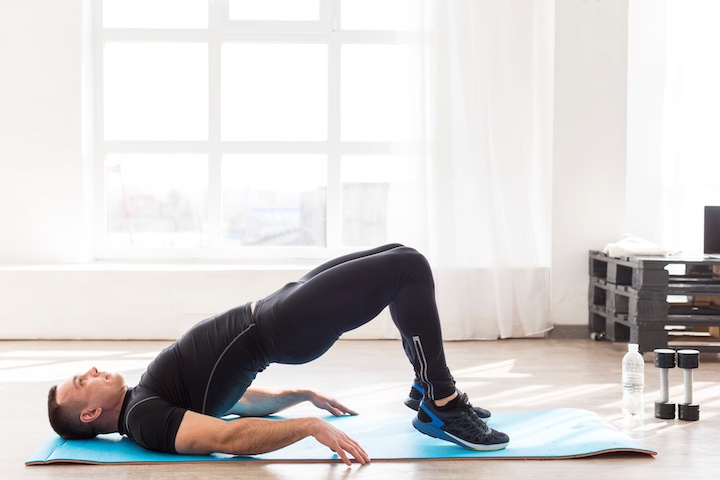Prostate cancer is one of the most common cancers in men. For those who require surgery, a prostatectomy may be necessary to remove the prostate gland. However, this surgery can significantly impact a patient’s quality of life, particularly in terms of bladder and bowel control.
That’s where physiotherapy comes in. Pre & post-Prostatectomy rehab programs, designed by expert physiotherapists, can help patients prepare for surgery and recover more quickly afterwards. Physiotherapy is an essential part of the rehabilitation process, and it has been shown to improve bladder and bowel control, decrease pain, and enhance overall physical function.
Undergoing a prostatectomy can be a challenging experience, both physically and emotionally. However, certain exercises and lifestyle changes can help prepare the body for surgery and improve recovery. In fact, pre-prostatectomy exercises have been found to be a key factor in reducing the side effects of surgery and speeding up the recovery process.
Several exercises can be done to improve prostate health and strengthen the pelvic floor muscles before surgery. These exercises include:
It is important to note that not all exercises are suitable for everyone, especially those with pre-existing conditions. It is important to consult with a physiotherapist or healthcare professional to determine the best exercise program for you.
Pre-prostatectomy exercises can be incorporated into a tailored physiotherapy program to help prepare the body for surgery. Physiotherapists can assess your pelvic floor function and provide a customized exercise program to help improve bladder and bowel control, reduce pain, and optimize recovery post-surgery. They can also provide guidance on lifestyle modifications and offer emotional support throughout the entire treatment process.

Photo Credit: Olga Selezneva, Envato Elements Photos
By taking an active approach to pre-prostatectomy preparation, patients can enhance their chances of a successful surgery and a speedy recovery. With the help of physiotherapy and a tailored exercise program, patients can feel more confident and prepared, both physically and mentally, for the challenges ahead.
After undergoing a prostatectomy, it’s important to begin rehabilitation as soon as possible to aid in the recovery process. Post-prostatectomy exercises can help improve bladder control, urinary and fecal incontinence, and overall pelvic floor function.
Here are some exercises and techniques that can help with your recovery:
It’s important to remember that regular exercise is key to a successful recovery. Stay active and incorporate these exercises into your daily routine.
Prostatectomy can often cause pelvic floor dysfunction, leading to urinary and/or fecal incontinence, pain, and sexual dysfunction. However, pelvic floor physiotherapy can greatly aid recovery and rehabilitation.

Photo Credit: Freepik
During a pelvic floor physiotherapy session, a trained physiotherapist can assess the function of the pelvic floor muscles and create a customized treatment plan. The treatment plans may include:
Studies show that pelvic floor physiotherapy can greatly improve continence and reduce pelvic pain after prostatectomy. It can also help men regain sexual function and improve their overall quality of life.
Male pelvic floor exercises can greatly benefit prostatectomy recovery. These exercises can improve bladder and bowel control and reduce the risk of incontinence. Here are a few exercises to get started:
Remember that each person’s recovery process is unique, and it’s important to consult with a physiotherapist before starting any exercise program. They can help create a tailored plan that suits your needs and goals.
It’s important to continue pelvic floor exercises and physiotherapy sessions after the initial recovery period. Regular strengthening and maintenance can greatly improve muscle function and overall pelvic health.
In addition to exercises and manual therapy, your physiotherapist may recommend lifestyle changes, such as hydration and dietary modifications, to improve pelvic health and continence management.
Overall, pelvic floor physiotherapy is a vital component of prostatectomy recovery. With the help of a trained physiotherapist and a tailored treatment plan, patients can greatly improve their quality of life and regain control of their pelvic function.
One of prostatectomy’s most common side effects is the loss of bladder and bowel control. This can be distressing and can significantly impact a patient’s quality of life. However, some exercises and techniques can help improve sphincter and urinary/bowel control.
One effective exercise for improving sphincter control is called Kegels. Kegels involve tightening and releasing the muscles used to stop the flow of urine. To perform Kegels, simply contract these muscles as if you were trying to hold in your urine, hold for a few seconds, and then release. Repeat this exercise several times a day.
Bladder training can also be helpful for improving urinary control. This involves gradually increasing the amount of time between bathroom breaks. Start by going to the bathroom every hour, then gradually increase the time between visits.
Other exercises that can help with urinary and bowel control include pelvic floor exercises, which involve contracting and relaxing the pelvic floor muscles. Your physiotherapist can help design a program of exercises tailored to your specific needs.
It’s important to remember that recovering bladder and bowel control takes time and patience. Your physiotherapist can guide continence management, including tips for managing accidents and coping with emotional stress.
Patients can improve their bladder and bowel control by working with a physiotherapist and performing regular exercises, leading to a more comfortable and confident recovery.
Following prostatectomy surgery, it’s important to take steps to promote recovery and overall prostate health. In addition to physiotherapy treatment, there is a range of exercises and lifestyle changes that can aid in the recovery process and promote long-term wellness.

Photo Credit: PressPhoto, Freeepik
One of the key exercises recommended for prostatectomy recovery is Kegel exercises, which focus on strengthening the pelvic floor muscles. These exercises can help improve bladder control and reduce urinary incontinence. Regular exercise, such as walking or cycling, can also aid in the recovery process by promoting blood flow and overall men’s health.
Another important factor in prostate health is diet. Eating a balanced and healthy diet rich in fruits, vegetables, and whole grains can help reduce the risk of prostate cancer and promote overall wellness. It’s also important to maintain a healthy weight and limit alcohol and processed foods.
For patients with prostate cancer, there are additional exercises that can help promote overall prostate health and reduce the risk of recurrence. These exercises include aerobic activities, such as running or swimming, as well as resistance training with weights or resistance bands.
Physiotherapy plays a crucial role in supporting prostatectomy recovery and promoting long-term prostate health. A tailored physiotherapy program, with both pre and post-surgery exercises, can help improve bladder and bowel control, reduce urinary incontinence, and enhance pelvic floor function overall. Physiotherapists can also provide ongoing support and guidance throughout the treatment process.
Physiotherapy plays a crucial role in both the pre and post-prostatectomy stages. Treatment before surgery can help prepare the body for the procedure and improve overall prostate health. The goal is to optimize the patient’s condition prior to surgery for a faster recovery.
Following prostatectomy, physiotherapy is vital in aiding the patient’s recovery process. A tailored program designed by expert physiotherapists will aim to restore bladder and bowel control, improve pelvic floor muscle strength, and promote overall prostate health. Early and ongoing physiotherapy intervention can facilitate successful patient outcomes.
Early intervention is key to achieving optimal recovery outcomes for prostatectomy patients. In the pre-surgery phase, physiotherapy can help reduce post-operative complications and facilitate faster recovery. Early physiotherapy treatment can help manage pain, improve bladder and bowel control, and reduce the risk of prolonged incontinence post-surgery.
Every patient’s recovery process is unique and thus requires a tailored approach to treatment. Physiotherapists specialize in addressing the specific needs of prostatectomy patients through personalized physiotherapy programs. These programs can help patients regain function, reduce pain, and improve overall quality of life.
Physiotherapists will conduct a thorough assessment to determine the patient’s needs and create a treatment plan tailored to their individual needs. Depending on the patient’s condition, treatment may include pelvic floor exercises, bladder control techniques, and other exercises to improve overall prostate health.
Physiotherapists provide ongoing support and guidance to prostatectomy patients throughout their treatment process. They will monitor the patient’s progress, make any necessary adjustments to the treatment plan, and provide education on self-management techniques. This ongoing support ensures patients are equipped with the tools they need to maintain optimal recovery outcomes.
In conclusion, pre and post-prostatectomy physiotherapy is vital in facilitating successful patient outcomes. Early and ongoing intervention through a tailored program designed by expert physiotherapists ensures patients are equipped with the tools they need to recover and maintain optimal prostate health.
Preoperative management of prostatectomy involves several steps. It usually includes a thorough medical evaluation, a discussion about the surgery and potential risks, and planning for post-operative care. The patient might be asked to stop taking certain medications and start pelvic floor exercises to strengthen the muscles involved in urinary control. A balanced diet rich in fiber may be recommended to prevent constipation post-surgery. Bowel preparation is also often required.
The duration of rehab after prostate surgery can vary based on individual recovery speed and the type of surgery performed. Most men will start with pelvic floor exercises soon after the operation. Generally, full recovery and return to normal activities may take several weeks to a few months. Regular follow-up appointments will be necessary to monitor progress and address any complications.
After prostate surgery, do follow your surgeon’s instructions, which will likely include doing regular pelvic floor exercises to help regain bladder control, taking prescribed medications, maintaining a balanced diet, and slowly increasing physical activity as tolerated. Don’t ignore signs of infection or complications such as fever, excessive pain, or blood in your urine. Avoid heavy lifting, strenuous activities, and sexual activities until cleared by your healthcare provider.
The best exercise after prostate surgery is often pelvic floor exercises, also known as Kegel exercises. These exercises help strengthen the muscles that control urine flow and can speed up recovery of urinary control after surgery. Walking is also generally encouraged to boost overall health and help prevent complications like blood clots. Always follow your healthcare provider’s advice about when and how to begin exercising after surgery.